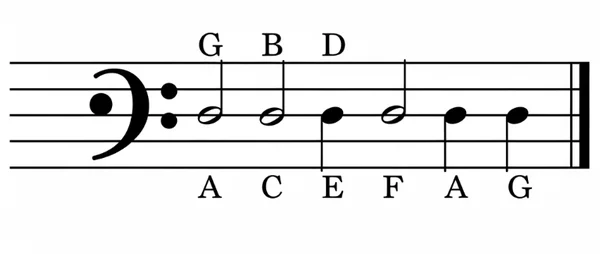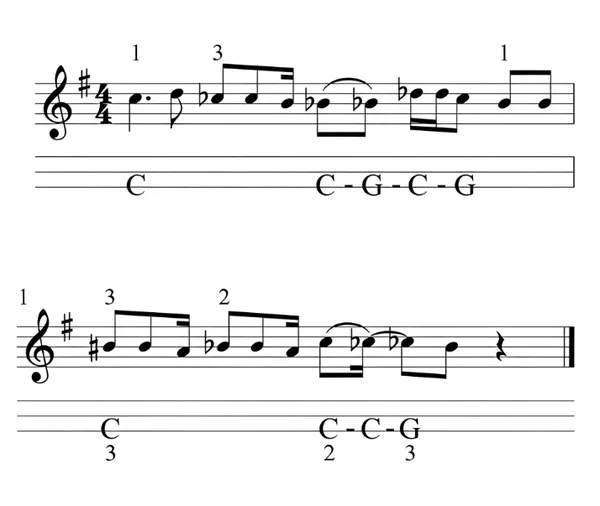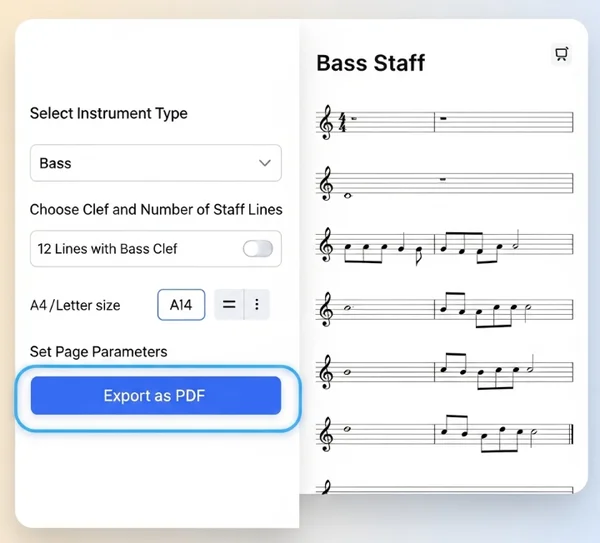Bass Staff Paper: Guide to Notation & Writing Bass Lines
The bass guitar is the rhythmic and harmonic anchor of almost any musical ensemble. Its deep tones provide the foundation, driving the groove and connecting the rhythm section to the melody. But how do you capture these foundational ideas on paper? Whether you're a seasoned bassist, an aspiring composer, or a music educator, understanding and utilizing bass staff paper is crucial for accurately transcribing, composing, and arranging for the low end. This comprehensive guide will walk you through the essentials of bass notation and writing effective bass lines, all while showing you exactly where to get high-quality, free bass staff paper tailored to your needs. Explore endless possibilities and start composing today with StaffPaper.org!
Understanding Bass Clef Notation
Before you can effectively write bass lines, you need to understand the language of the bass clef. This foundational knowledge is key to accurate transcription and composition for low-pitched instruments.
The Basics of the F Clef
The bass clef, often referred to as the F Clef, is easily recognizable by its symbol. It resembles a stylized "F" with two dots that straddle the fourth line from the bottom of the staff. This particular line is designated as F, specifically the F below middle C. Understanding this fixed point is vital, as all other notes on the bass staff are relative to this F. The bass clef is primarily used for instruments that play in the lower register, such as the bass guitar, cello, trombone, tuba, and the left hand of the piano. Its purpose is to make reading and writing low notes much easier and more organized, avoiding excessive use of ledger lines below the treble clef.
Reading Notes on the Bass Staff
Once you know the F Clef's position, reading notes on the bass staff becomes straightforward. The five lines and four spaces each represent a specific pitch. Starting from the bottom line, the lines are G, B, D, F, A. A common mnemonic to remember these is "Good Boys Do Fine Always." For the spaces, starting from the bottom, they are A, C, E, G, which can be remembered as "All Cows Eat Grass." Notes below or above the staff use ledger lines, extending the range. For example, middle C is typically one ledger line above the bass staff. Practicing reading these notes on actual bass staff paper will significantly improve your fluency and ability to translate sounds into written notation. Mastering note reading is the first step towards truly capturing your musical ideas.

Principles for Writing Effective Bass Lines
Moving beyond simply reading notes, writing effective bass lines is an art that combines harmonic support, rhythmic drive, and melodic interest. A strong bass line can elevate a song, providing both a foundation and a dynamic element.
Common Bass Patterns and Rhythms
Effective bass patterns often center around the root notes of chords, providing harmonic clarity. However, simple root notes can sometimes sound monotonous. To add interest, bassists frequently incorporate fifths and octaves. For example, over a C major chord, a bass line might play C-G-C. Walking bass lines, prevalent in jazz, feature a continuous string of quarter notes that smoothly connect chord tones and passing notes, creating a sense of forward motion. Rhythms are equally important; a bass line might focus on driving eighth notes, syncopated sixteenth notes for funk, or sustained half notes for a ballad. Experimenting with different rhythmic patterns on blank music staff paper can dramatically change the feel of a song. Try laying down various rhythmic ideas over a simple chord progression.

Melodic vs. Rhythmic Bass Approaches
Bassists often lean into one of two primary approaches: melodic or rhythmic. A melodic bass approach emphasizes the creation of a distinct melodic counterpoint to the main melody, often incorporating scale passages, arpeggios, and expressive phrasing. Think of bass lines that are memorable on their own, often played by bassists like Paul McCartney or Jaco Pastorius. This approach requires a keen ear for harmony and voice leading. Conversely, a rhythmic bass approach prioritizes groove and percussive attack, locking in tightly with the drums. This style often involves repeating patterns, strong accents, and a focus on pocket and feel rather than intricate melodic lines. Many funk and reggae bassists excel in this area. Both approaches are valid and vital, depending on the musical context. Using proper staff notation paper allows you to clearly delineate and refine both melodic contours and rhythmic precision in your compositions.
Getting Your Printable Bass Sheet Music
Now that you understand the theory, it's time to put pen to paper (or digital pen to digital paper!). Having access to high-quality printable bass sheet music is essential for any bassist, composer, or educator.
Customizing Your Bass Staff Paper on StaffPaper.org
StaffPaper.org offers an incredibly simple and powerful way to get the exact bass staff paper you need, completely free. Head over to the StaffPaper.org homepage and you'll find an intuitive interface designed for immediate use. Here's how to customize your bass staff paper:
- Select Instrument Type: From the top menu, choose "Bass" to specify bass staff.
- Choose Clef and Number of Staff Lines: Within the bass section, you can select templates like "12 Lines with Bass Clef" or other variations based on your preference. This ensures the correct F clef is pre-printed.
- Set Page Parameters: Decide how many pages you want to generate and choose your preferred paper size (Letter or A4) to match your printer.
- Preview and Download: The right side of the page provides a real-time preview of your custom staff paper pdf. Once satisfied, click "Export as PDF" to instantly download your high-quality, ready-to-print file.
It's that easy! StaffPaper.org eliminates the hassle and cost of buying pre-printed books, giving you unlimited access to precisely what you need for your blank music staff paper requirements.

Practical Exercises to Start Writing Today
With your freshly printed bass staff paper, you're ready to dive into practical application. Here are a few exercises to get your creative juices flowing:
- Transcribe a Simple Bass Line: Listen to a favorite song with a clear bass line. Use your bass staff paper to try and transcribe the first 8-16 bars. Start slowly, focusing on pitch and then rhythm. This sharpens your ear and notation skills.
- Create Variations on a Simple Groove: Take a basic two-bar bass pattern (e.g., root-fifth). Write it down, then try creating three different rhythmic variations or adding passing notes, documenting each on a new line of your blank music staff paper.
- Write a Bass Line for a Chord Progression: Find a simple four-chord progression (e.g., C-G-Am-F). On your custom staff notation paper, write a bass line that supports these chords, exploring both melodic and rhythmic approaches. Aim for smooth voice leading.
These exercises will not only improve your understanding of bass notation but also foster your composition skills. Remember, the more you practice, the more intuitive writing for the bass will become.
Unleash Your Low-End Creativity with Free Bass Staff Paper
The bass is the heartbeat of music, and having the right tools empowers you to lay down compelling grooves and harmonies. We've explored the fundamentals of bass clef notation, delved into principles for writing effective bass lines, and shown you how simple it is to acquire free printable music staff paper perfectly tailored to your needs from StaffPaper.org. No more scrambling for paper or settling for generic templates.
Whether you're a student deciphering new scales, a composer crafting your next masterpiece, or a teacher preparing lessons, StaffPaper.org is your go-to resource for all your staff paper needs. It’s completely free, highly customizable, and instantly available. Don't let the lack of manuscript paper hinder your musical journey. Visit StaffPaper.org today and download your custom blank music staff paper to begin your next great musical creation. Share your creations and inspire fellow musicians!
Frequently Asked Questions About Bass Staff Paper
Where can I get free bass staff paper for practice?
You can get completely free bass staff paper for practice directly from StaffPaper.org! Our online tool allows you to customize and download high-quality PDF files for immediate printing. Simply visit our homepage, select the bass clef option, customize your preferences, and download instantly.
How many lines are on a typical bass staff?
A typical bass staff, like all musical staves, consists of five horizontal lines and four spaces between them. Each line and space represents a specific musical pitch. Notes extending beyond this range are written using ledger lines above or below the staff.
What's the main difference between treble and bass clef?
The main difference lies in the range of notes they represent and where middle C is positioned. The treble clef (G clef) is used for higher-pitched instruments and defines the second line from the bottom as G above middle C. The bass clef (F clef) is used for lower-pitched instruments and defines the fourth line from the bottom as F below middle C. Both clefs are essential for covering the full range of musical pitches on staff notation paper.